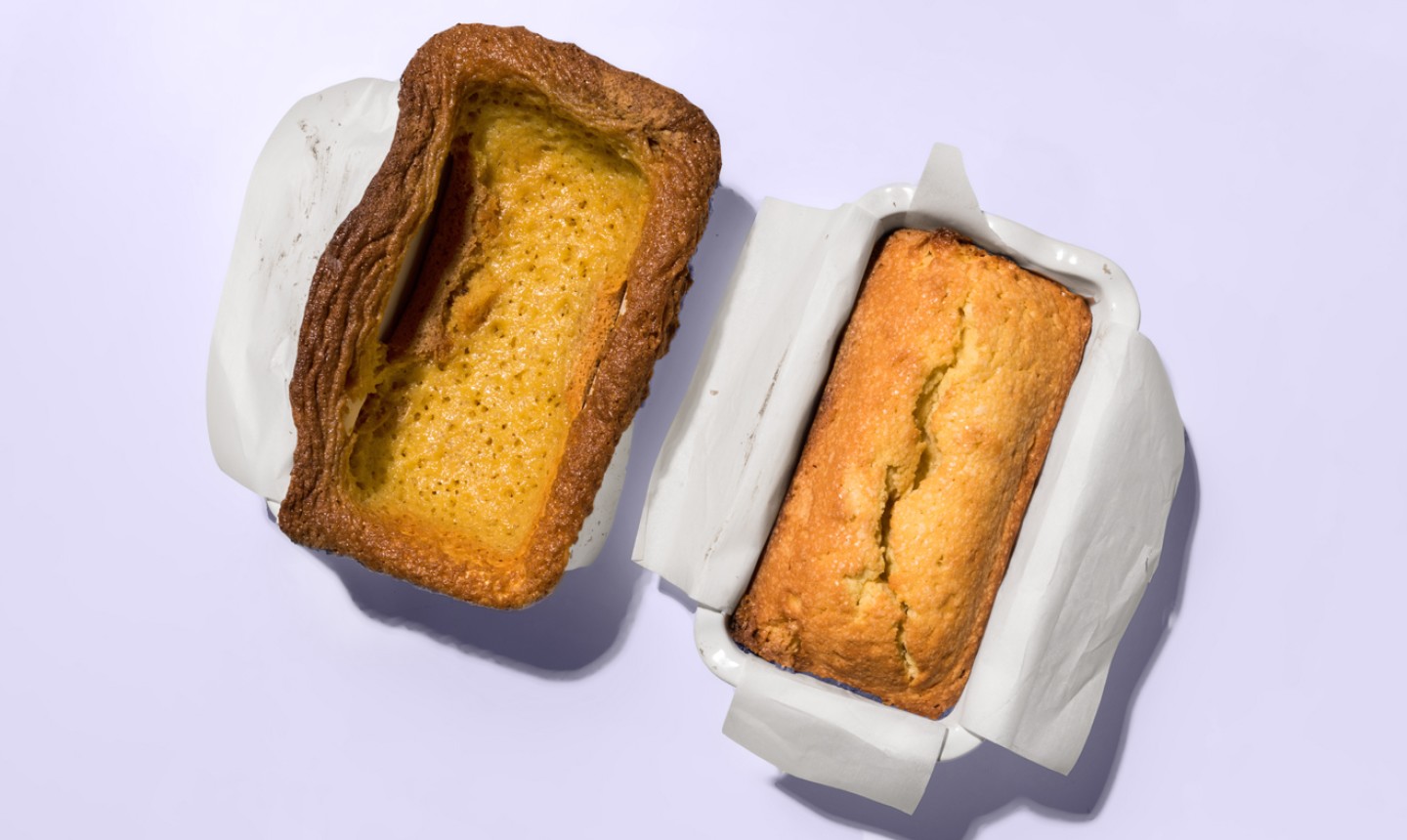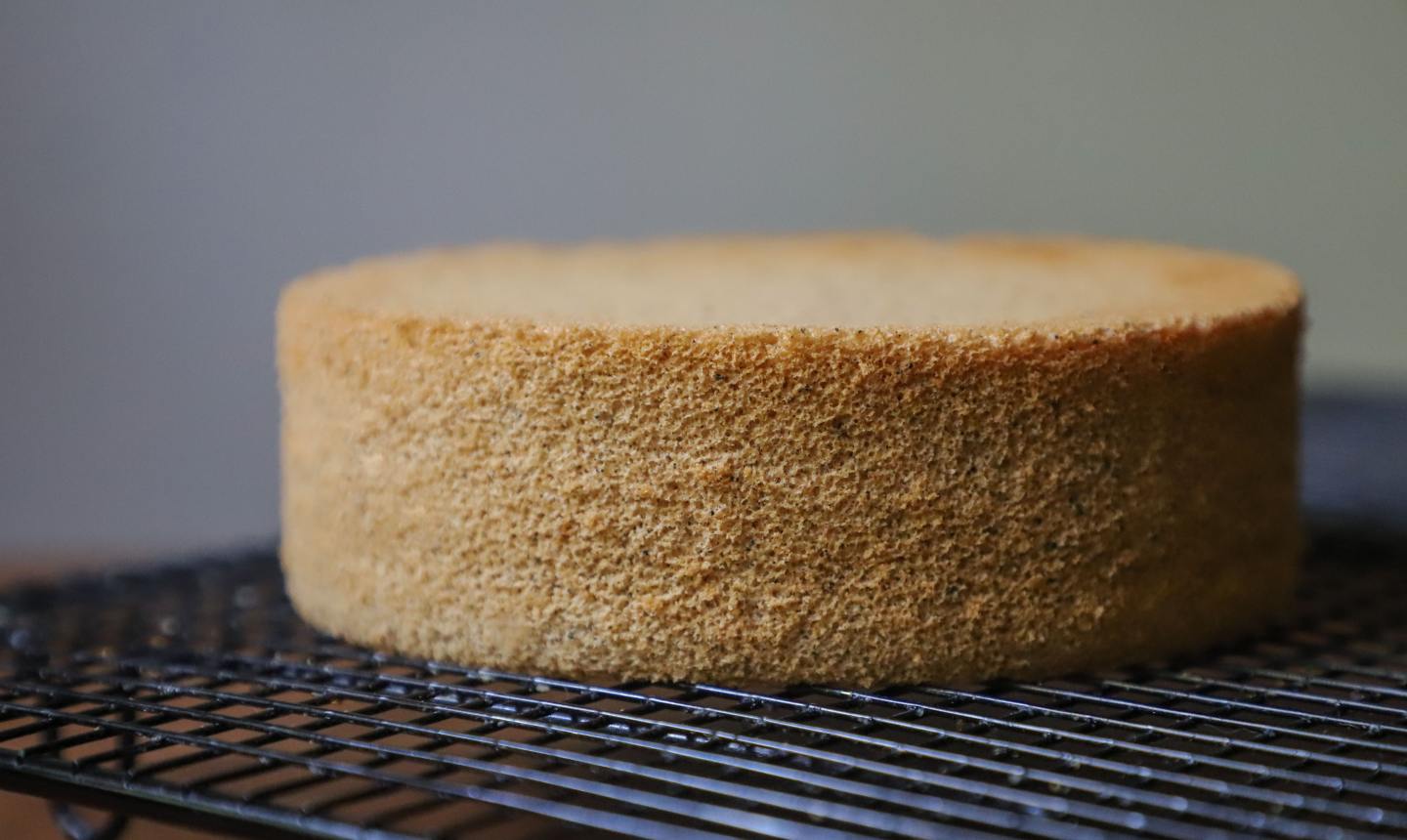
Decorating cakes is an art, but baking cakes is a little more science-y. Get it wrong and you might end up with a cake that’s dry, wet, tough, crumbly or flawed in some other deeply tragic way.
There’s usually a reason things go wrong, and it often comes down to basic baking techniques. But don’t fret! Basic techniques mean basic solutions: you’ll have beautiful cakes in no time by following our tips for top cakes.
Problem #1: Your Cake Caves In

jules/Flickr
Possibly you didn’t add enough of your wet ingredients to the batter but more likely you mixed in too much flour. Next time, be sure to properly measure and sift.
Under Baked
A cake can look done even when it isn’t. To check, insert a cake tester or skewer in the center. If it comes out mostly clean, your work is done. If it’s not mostly clean, leave it in the oven! Otherwise, it’s gonna cave.
You Peeked
Never open the oven door until a cake is more than halfway baked. And even then, opening the oven door every few minutes to check (tempting as that may be!) is a no-no because you’re interrupting reactions that are kick-started by heat.
Too MUCH Moisture
This could be the culprit if your cake falls a few minutes after you take it out of the oven. If you live in a humid climate, your flour may have picked up excess moisture from the air. Avoid this by storing your flour in an airtight container.
Pro Tip If the cake falls in the center but is completely baked through, you may be able to salvage it by leveling it to the lowest point.
Problem #2: Your Cake is Tough
Over Mixed
In general, once you add flour, you want to mix the batter only as much as you absolutely have to in order to combine the ingredients and get rid of any lumps. Mix too much and you can overdevelop the gluten in the flour, giving the cake a coarse grain.
Wrong Flour
You only had half a cup of cake flour left, so you figured it would be fine to substitute all-purpose or even bread flour. Uh, no. The amount of protein in each type of flour can vary quite a bit, leading to very different results. Bread flour is great for a crusty loaf, not so much for a delicate cake.
Bad Measurements
Inaccurate measurements can throw off the texture of a cake. Be sure to properly measure all your ingredients and sift your flour.
Don’t Make Ahead
You might be tempted to to make your batter the day before and refrigerate it overnight so you can bake in the morning. Don’t do it! Your cake’s texture will suffer.
Problem #3: Your Cake is so Tender it’s Falling Apart

Buenosia Carol/Pexels
More Bad Measurements
If you added too much sugar, shortening or leavening, or too few eggs, your cake might crumble too easily. Just be more careful next time.
Not Enough Mixing
Follow the recipe’s instructions, which should tell you either how long to mix or what texture to look for while you’re mixing to tell you the batter is ready.
Problem #4: The Cake Cracked on Top
Hot Oven Fail
Raising the temperature can make a cake bake quicker, but with less-than-perfect results.
Tiny Pan Syndrome
Read the recipe to see what size pan it calls for. Using a pan that’s too small may result in uneven baking.
Over Leavened
Using too much leavening can cause a cake to rise too much and mess up the texture.
Problem #5: The Cake Won’t Come Out of the Pan
You Didn’t Grease, Did You
A cake pan almost always needs to be greased, unless otherwise noted in the recipe.
Use Parchment
Next time, line the bottom and even the sides of the pan with parchment paper and dust every surface with flour.
Dirty Pan
Are you re-using a pan with multiple batches of cake batter? That’s fine, but wash it out very well each time. Those small bits of crumb left behind can make the new cake stick.
Pro Tip When a cake comes out of the oven, immediately run a sharp knife along the perimeter of the pan to help loosen the sides.
Problem #6: You’ve Done Everything Right, but Your Cake is Still Wrong
It’s Your Oven’s Fault
It’s possible it’s not your fault. Make sure you oven is heating accurately — check with an oven thermometer now and then to ensure that when the temperature gauge reads 350 F, it really is 350 F.
Blame the Ingredients
If you can’t even remember when you bought your baking powder,chances are it’s too old. Ingredients can lose their potency with age, so be sure to use the fresh stuff. Your cakes will be grateful.

Share tips, start a discussion or ask one of our experts or other students a question.
Already a member? Sign in
No Responses to “Cake Fail No More! Tips for Top Cakes”